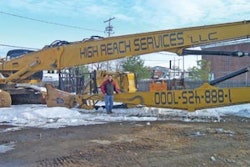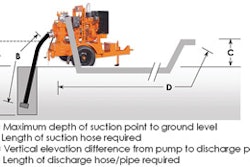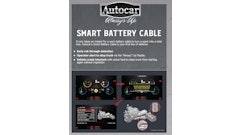When I review annual cost surveys and other industry reports, I look at the entire report from top to bottom. The main numbers most people always discuss are sales, the gross profit margin and the profit before tax.
There may also be a column for the High Profit (HP) performers, representing the top 25% of the survey respondents for that particular year. The HP participants usually make a little more on gross profit percentage, but also have better expense control over all operating expenses that appear below the gross profit line. It is not unusual for them to have a significant difference in gross profit percentage, and maybe 1.50% less in operating expenses. For example, a company with $20 million in sales could have an overall difference in pre-tax profits of 2.5% or $500,000. That's a lot of money!
Drilling down a little deeper, we see the largest contributors to this result are the differences in the gross profit margin and in the payroll figure (includes taxes, insurance and fringe benefits). The balance of these differences relates to operating expenses. Following the old 80/20 principal, these three categories would be a good place to start if you also want to hit the HP pre-tax profit number.
Where to eke out additional profit
I suspect every profit center can add "something" to the gross profit line if forced to do so.
Could you get an additional 1.0% out of the sales function? This sounds easy, but we all know it's not. You would have to review your bid process, scheduling, equipment use, rental dollars spent and manpower use, and in general have better job control, including billing. However, you can find 1% - I'm sure of it. And once you find a way to achieve it, you need to communicate these thoughts to your foremen to get the right procedures implemented in the field.
On the expense side, the biggest change is in the payroll line, which is made up of direct and administrative payroll, payroll taxes and insurance (including health and workman's comp) and employee benefit programs. Since this category also represents a significant expense reduction, we are talking about a substantial change from the "typical" contractor.
Based on industry reports, it looks as if the bulk of the savings HP performers achieve relate to direct payroll control. HP performers also spend less on payroll taxes, workman's comp, health insurance and benefit programs (considering what can be done with union costs).
Based on my experience, excess personnel costs are made up of the following:
- excessive overtime
- lack of outsourcing
- late personnel adjustments during seasonal fluctuations
- poor hiring practices
- poor system documentation
- improper use of computer systems
- lack of internal controls
- poor planning
- lack of on-going inspections ("don't expect what you don't inspect")
In addition, many contractors do not manage their insurance expenses properly, nor do they get the professional help they need to do so. Consumer-driven health plans will save you dollars - if you know how to install them properly and provide appropriate employee education. And who really knows what's going on with their general insurance and workman's comp? These days, it's not a bad idea to have someone in your corner to decipher what the insurance company is telling you.
Profits via cost cuts
The rest of the operating expenses bring up other opportunities, as well. There is a 10% cost reduction available in almost every category, and there are people out there to help you get those benefits for little up-front cost and a piece of the savings. Proper budgeting and proper budget adjustments through the year will also bring about savings.
When all is said and done, it appears the first front to attack would be the gross margin line. Work the sales mix, do proper bidding and pricing, find more to bill for your services, have proper cost controls in place and offer incentives for performance.
Operating expense reductions would be next. If they are there, you can find the reductions.
The people issue is the toughest area to work on. It may take some time to fix if you need to redo procedures and make certain you are getting the most out of your computer programs.
The easiest option here is to take advantage of outsourcing. Make sure your administrative staff, including field personnel, aren't doing work that your vendors should be doing. Every effort should be made to outsource the work, if possible. For those tasks that must be done in house, make sure your employees are taking advantage of existing computer systems to perform the work electronically.
A lot of small changes can add up to large profits. Good times or bad, this exercise is a must.


















